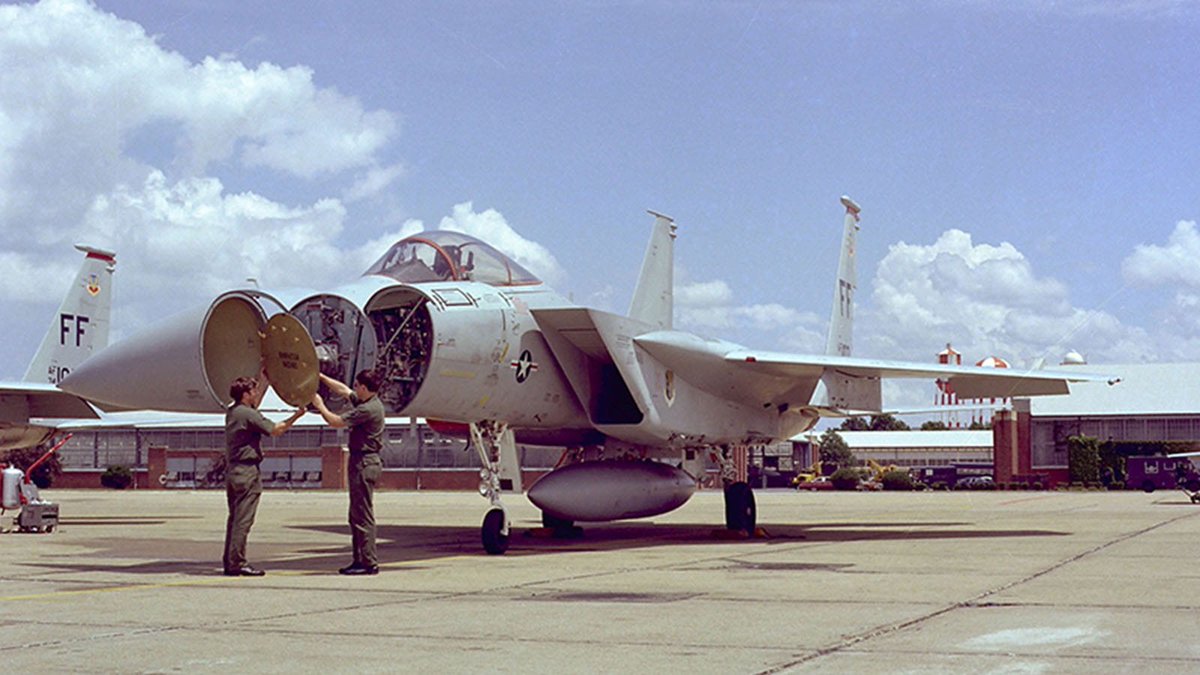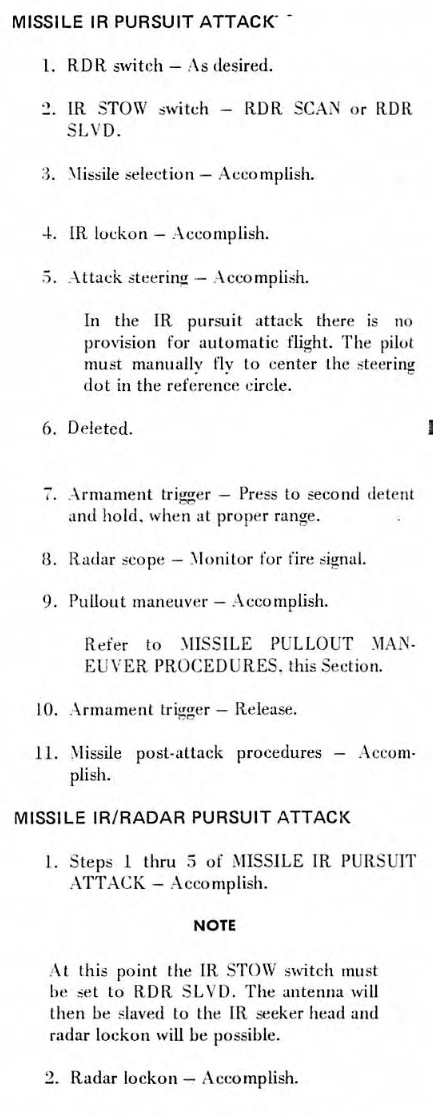The first F-16A MLUs are starting to appear with Ukrainian markings. It's time to talk a little bit about the F-16A and the MLU, mostly focusing on the F-16A's development history.🧵 holosameryky.com/a/pilot-phanto…
NOTE: This will be different from my normal threads. All F-16A and 16A MLU manuals found online are export-restricted, so I will not use them, nor reference any information in them. I will use third-party sources and public documents.
I will not do legwork for the Russians.
I will not do legwork for the Russians.
During the Vietnam War, the advanced F-4 was struggling to handle MiG-19s and early MiG-21s, which were classed as "Day Fighters." Day fighters are a type of fighter aircraft designed primarily to operate, as the name implies, during the day. VPAF MiG-19 and MiG-21F-13 below.




Day fighters often lack long-range radars, radar missiles, and rely primarily on infrared-guided missiles, ground-controlled intercept, and superior flight performance to gain an edge in a fight. These aircraft are also generally lower maintenance and lower cost.
The less advanced Northrop F-5, another kind of day fighter, was used in the Vietnam War, to mixed success. Its main draws were ease of maintenance, high mission readiness rates, and low cost. 

Though many in the initial deployment to Vietnam were lost to ground fire, it was a good airframe that could be provided to allied nations at a lower cost than something like an F-4, and required less training and support.
Another successful day fighter that will be relevant here is the F-104. The F-104G, seen here in Royal Netherlands Air Force service, was a high-speed fighter designed to be extremely maneuverable at higher altitudes and high Mach numbers. 

In most services that trained pilots well, it was very well-liked for its outstanding acceleration, speed, and high G-capability above Mach. It was in service with many countries including, notably, Norway, Denmark, Netherlands, and Belgium.
During the development of the F-15, under the F-X program, a second concept was explored: The ADF, or "Advanced Day Fighter." Some of the major proponents of it were the self-described "Fighter Mafia", who wanted to focus primarily on low-cost, high-performance day fighters.




John Boyd, one of the members of the "Fighter Mafia," pioneered something called "energy-maneuverability theory". This was a way to relate all flight performance characteristics into one value that could be expressed across the entire flight envelope in "specific excess power". 

An example here is the F-4E E-M diagram. This, in my opinion, is an unrealistic representation of the F-4E's performance, but that is a discussion for another time.
Ps are the smaller curves, shown in Ps=0, or plus/minus feet/second depending on the curve.
Ps are the smaller curves, shown in Ps=0, or plus/minus feet/second depending on the curve.

In the follow-on program to ADF, "Lightweight Fighter" or LWF, the focus was on providing a new, high-performance day fighter, guided by the principles of E-M theory. The F-15 was a quality-over-quantity approach, and the proponents of LWF wanted quantity to match the Soviets.




For now, we will skip the YF-17 and the LWF competition itself. The short version is that the F-16 won, and the YF-17 would go on to become the F-18. 

The engineering behind the F-16 was marvelous. It featured advanced aerodynamics, state-of-the-art "fly-by-wire" flight controls, and much more.






One of the major design considerations in the F-16 was the high situational awareness. The F-4 Phantom was bemoaned by pilots due to its less-than-stellar visibility, which could lead to targets being lost in a dogfight.




The LWF concept came from people who distrusted radar missiles. You'll note in the second slide that it shows an AIM-9 Sidewinder and an M61A1 Vulcan cannon under "reliable weapons". The F-16, as originally designed, had no provisions for firing the radar-guided AIM-7 Sparrow.
As such, it had to rely on this superior flight performance. Its structure was designed to match, with a very high G limit for the time of 9gs at full internal fuel. At the time, planes like the F-4 were limited to around 7gs at full fuel! 

Around the time of the LWF competition, the four operators of F-104Gs I mentioned earlier--Norway, Denmark, Netherlands, and Belgium--were looking for a replacement. They wanted a relatively inexpensive day fighter that could be manufactured by their local aerospace industries.
The F-16, with its mostly aluminum construction, fit the bill.
These four countries signed on to procure the winner of the LWF competition and produce versions of it at home. And produce they did!
These four countries signed on to procure the winner of the LWF competition and produce versions of it at home. And produce they did!

Despite the outstanding capability of the airframe, there were some issues. The LWF as a concept was very limited, and the lack of radar missiles limited its effectiveness in a modern battlefield to mostly ground attack, a task that the earlier F-5 found itself doing in Vietnam.
Beyond that, in the European nations that had purchased the F-16A, the aircraft were beginning to hit the end of their lifespan by the year 2000. Though an airframe life of 8,000 hours was impressive for the 1970s, these aircraft would not last forever. 

A replacement was needed, but for a number of reasons, would not be available for some time. This replacement, we now know, would be the F-35.
At the time, though, the airframes had begun to develop small cracks due to age, and needed repair.
At the time, though, the airframes had begun to develop small cracks due to age, and needed repair.
While they were at it, a number of upgrades could be made to improve combat capability. The first and foremost of them was to improve the cockpit to at least a F-16C block 50 standard. The original F-16A cockpit only had one mono-color multi-function display. 

The F-16A MLU cockpit looks much like that of the F-16C block 50. This is supposedly a render. I cannot find any other high-res public cockpit photos of the MLU.
As you can see, the instruments have been reorganized, and the single MFD has been replaced with two multi-color MFDs.
As you can see, the instruments have been reorganized, and the single MFD has been replaced with two multi-color MFDs.

One of the other major issues that needed to be corrected was the lack of radar missiles. The F-16A Air Defense Fighter in US service, as I covered before, had integrated AIM-7. By the 1990s, there was a new missile on the block--AMRAAM.
AMRAAM, unlike AIM-7, could be more easily integrated into existing F-16s. Being an active radar missile, it did not need radar illumination from the launching aircraft, only target tracking information before launch.
AMRAAMs shown on wingtips here.
AMRAAMs shown on wingtips here.

Beyond this, the new computer added to the MLU allowed for easy upgrades to the software and easy integration of modern air-to-ground munitions, including SDB, JDAMs and more. 

One of the other additions to the MLU is JHMCS, or Joint Helmet Mounted Cueing System. This is an advanced helmet-mounted display that provides important information to the pilot, but also provides the ability to slew the radar and missile seekers to the pilot's line of sight. 

There are countless other upgrades included that I am not covering, mostly for the sake of brevity. The short version is that these aircraft are just about as capable as any F-16C flying today.
Thanks to this upgrade, the F-16AM/BM MLU are incredibly capable multi-role fighters--despite the wishes of the designers of the LWF!
Another note. I have since been informed that the photo in the article is a Photoshop, and that it's just a Danish F-16A MLU. The rest of this thread still stands.
• • •
Missing some Tweet in this thread? You can try to
force a refresh



























